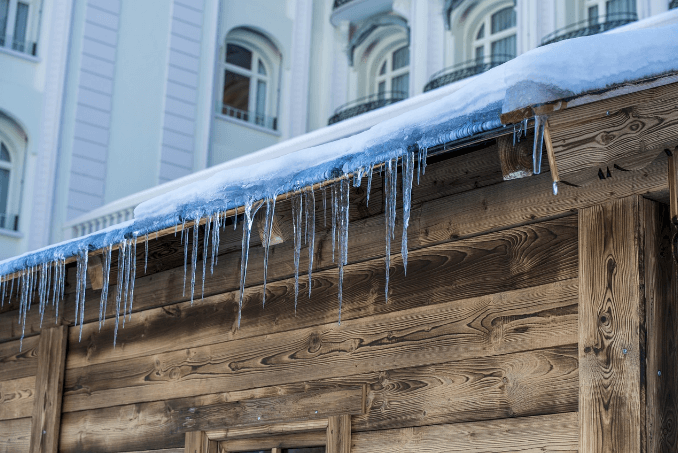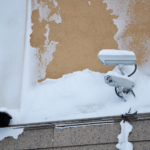
Ice Dams: What they are and how to prevent them
Winter in New England
Ice dams are a common winter problem that can cause significant damage to homes. Understanding what ice dams are, how they form, and whether homeowners insurance covers the resulting damage is crucial for homeowners. In this article, we will explore the dangers of ice dams, their prevention, and the coverage provided by homeowners insurance policies.
What are Ice Dams?
Ice dams are ridges of ice that form at the edge of a sloped roof. They occur when snow on the roof melts and refreezes at the roof’s edge, creating a barrier that prevents proper drainage. As a result, water can seep into the interior of the home, causing damage to the roof, walls, and other structures.
The Dangers of Ice Dams
Ice dams pose several dangers to homeowners. The weight of the ice can put significant stress on the roof, potentially leading to structural damage or even collapse. Additionally, the water trapped by the ice dam can penetrate the roof, causing leaks, water damage, and mold growth. If left untreated, these issues can result in costly repairs and pose health risks to occupants.
Preventing Ice Dams
Prevention is key when it comes to ice dams. By taking proactive measures, homeowners can reduce the likelihood of ice dam formation and minimize potential damage. Here are some effective prevention strategies:
1. Keep the Attic Well Ventilated
Proper attic ventilation is essential in preventing ice dams. A well-ventilated attic helps maintain a colder temperature, reducing the melting and refreezing of snow on the roof. Ensure that vents are unobstructed and consider installing additional vents if necessary.
2. Insulate the Attic Floor
Insulating the attic floor helps prevent heat from rising through the attic and melting the snow on the roof. Adequate insulation can help maintain a consistent temperature and minimize the conditions conducive to ice dam formation.
3. Install a Water Repellent Membrane
To provide an extra layer of protection, consider installing a water repellent membrane under the roof covering. This membrane acts as a barrier, preventing water from seeping into the interior of the home in case ice dams do form.
4. Avoid Recessed Lighting Near the Roof
Recessed lighting near the roof can contribute to the melting of snow and the formation of ice dams. Consider eliminating recessed light fixtures near the roof to prevent heat generation that can lead to ice dam buildup.
Homeowners Insurance Coverage for Ice Dam Damage
The coverage provided by homeowners insurance for ice dam damage can vary depending on the policy and insurance provider. It’s essential for homeowners to review their policy and understand the specific coverage and exclusions related to ice dams. Here’s what you need to know:
1. Dwelling Coverage
Dwelling coverage typically covers the cost of repairing damage to the structure of your home caused by ice dams, such as roof repairs or wall damage. The coverage is subject to the policy’s coverage limits. It’s important to note that damage resulting from a lack of maintenance before or after the ice dam damage may not be covered.
2. Personal Property Coverage
In addition to covering the structure of your home, homeowners insurance may also provide coverage for damaged personal property resulting from ice dam-related issues. This coverage helps replace or repair personal belongings affected by water damage caused by ice dams.
3. Exclusions and Limitations
It’s crucial to be aware of the exclusions and limitations within your homeowners insurance policy regarding ice dam damage. Certain structures, such as fences, pavements, swimming pools, and patios, may be excluded from coverage. Additionally, damage caused by freezing, thawing, or the weight of water or ice may not be covered for these structures.
4. Hail Damage Coverage
While not directly related to ice dams, hail damage is another common issue during winter. Homeowners insurance policies may include coverage for hail-related damage to your home and other structures, subject to coverage limits and deductibles specific to hail claims.
5. Freezing Pipes Coverage
Frozen or burst pipes caused by freezing temperatures may also be covered by homeowners insurance. However, coverage is typically limited to instances where the damage is caused by a covered peril and not due to negligence. It’s essential to maintain adequate heat in your home to prevent frozen pipes.
6. Liability Coverage for Slip and Fall Accidents
If someone slips on ice or snow at your home and is injured, your personal liability coverage may provide coverage for their medical bills and legal costs if they take legal action. Taking precautions to remove snow and ice from your property can help minimize the risk of such accidents.
Conclusion
Ice dams can cause significant damage to homes during winter. Understanding the dangers of ice dams and taking preventive measures is crucial for homeowners. Reviewing your homeowners insurance policy and understanding the coverage provided for ice dam damage is equally important. By implementing preventive strategies and ensuring adequate insurance coverage, homeowners can protect their homes and belongings from the potential hazards of ice dams.
Additional Information: Safety Northeast Insurance provides residential and homeowners insurance. In addition, we also provide Renters Insurance for folks who want to insure their personal belongings inside a rented dwelling. For commercial property insurance, please visit our website or contact us directly for more information.

 Previous Post
Previous Post Next Post
Next Post